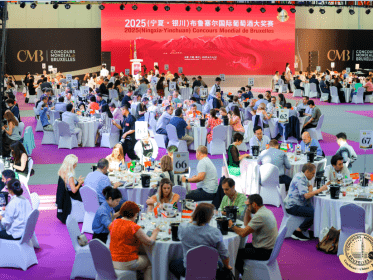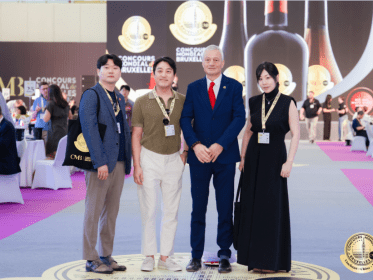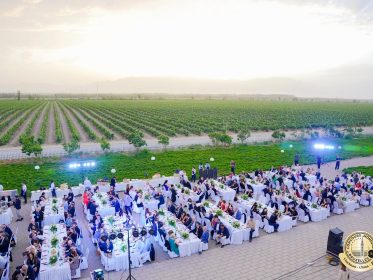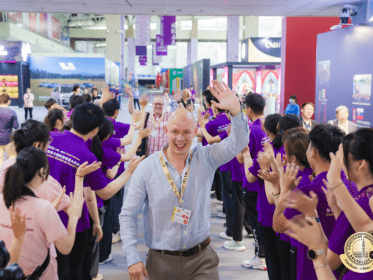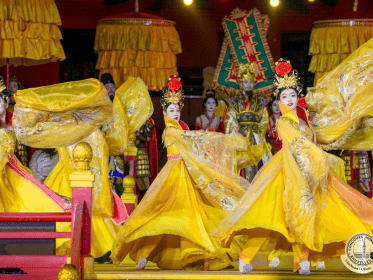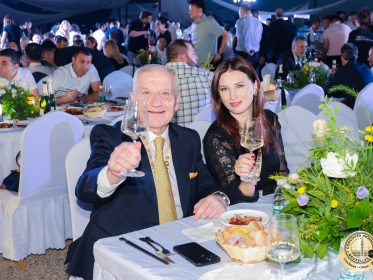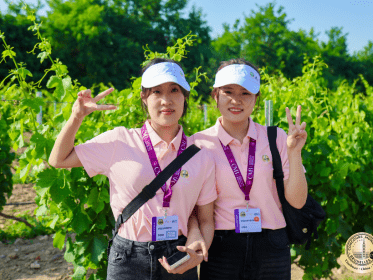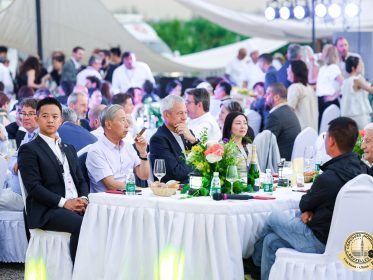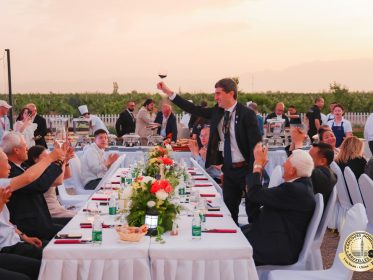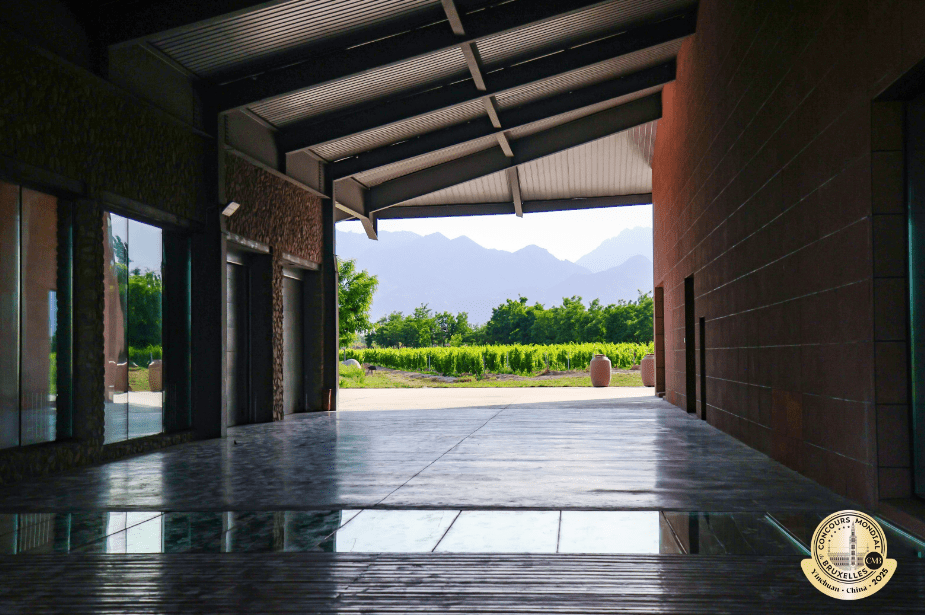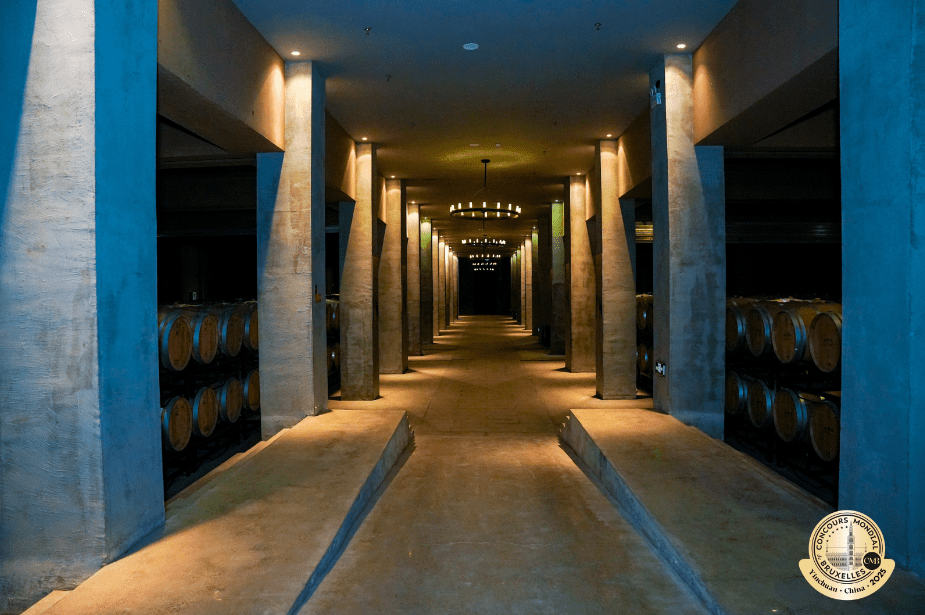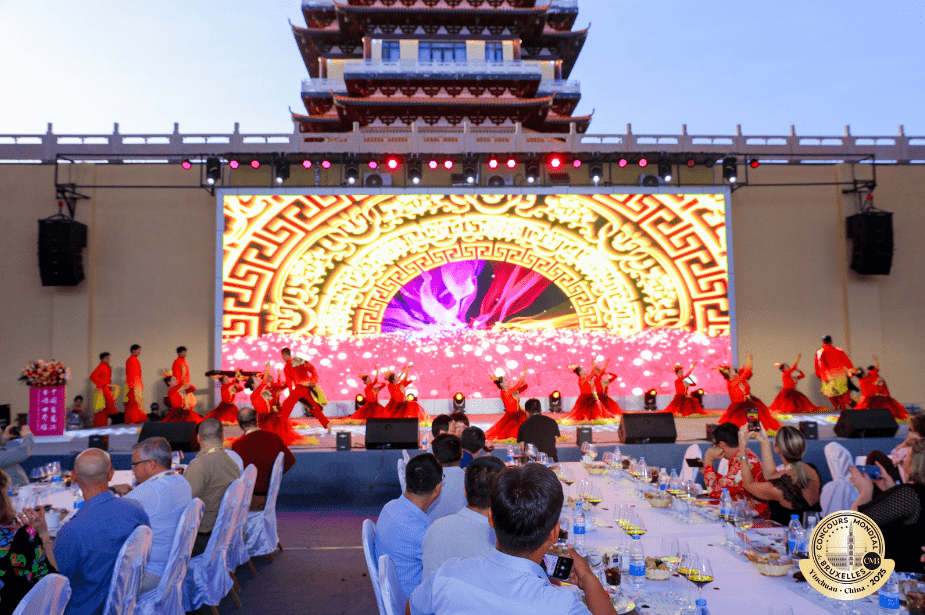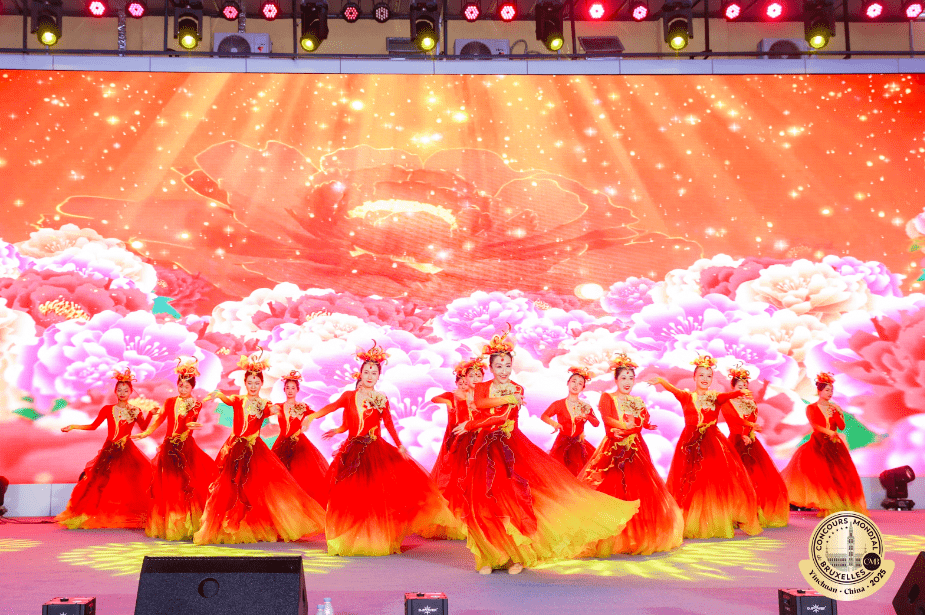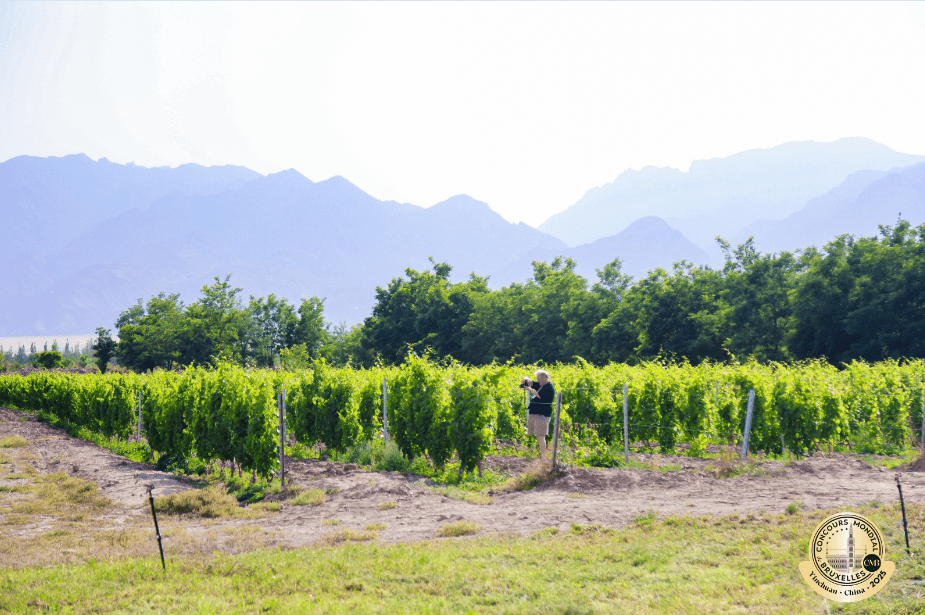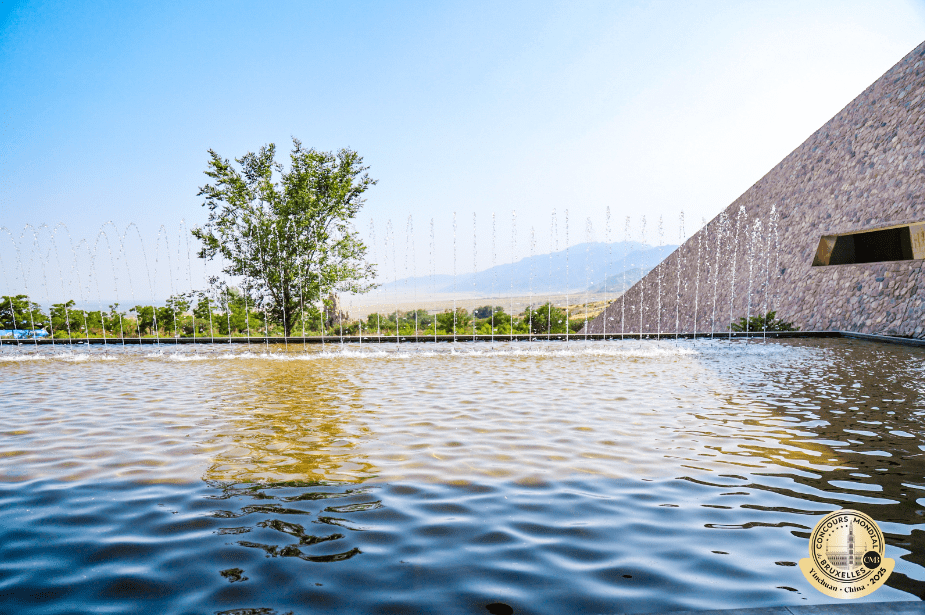CMB in Ningxia Opens a New Chapter for the Global Wine Industry
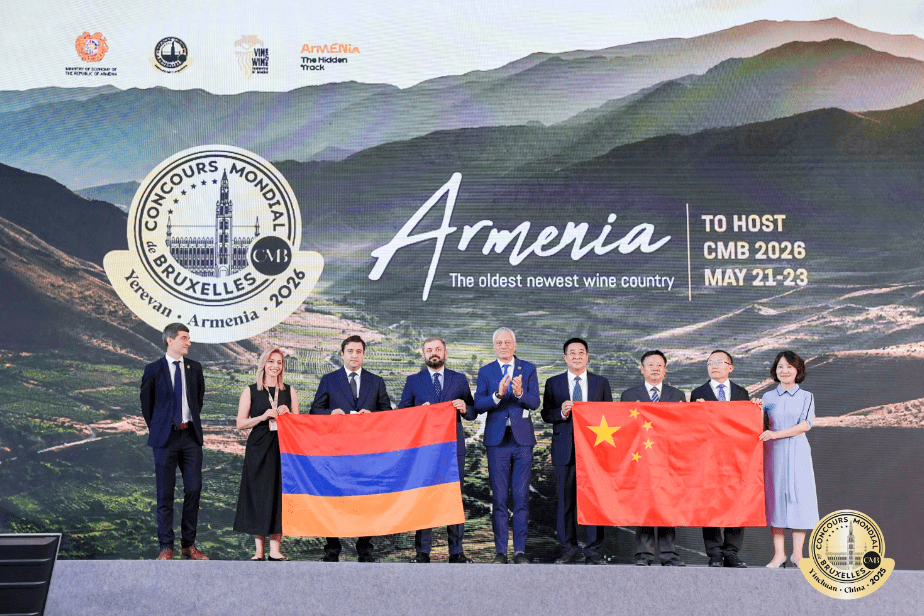
Author: Veronika Busel
China continues to capture the attention of a global audience, including wine tourism enthusiasts. The number of WTA nominees from this fascinating country is steadily growing, as is the interest in the Celestial Empire from international wine competitions.
Known globally as the “Wine Olympics,” the Concours Mondial de Bruxelles (CMB) has added a captivating new chapter to its story by choosing the emerging wine region of Ningxia, China, as its latest stage. Following its groundbreaking debut in Beijing in 2018, this year’s 32nd edition was held in Yinchuan from June 10 to 12. The event brought together 375 leading wine experts from 56 countries, who thoroughly evaluated 7,165 wines from 49 nations. Notably, this edition coincided with Ningxia’s Fifth International Exhibition of Wine Culture and Tourism, highlighting the region’s unique terroir, rich cultural traditions, and impressive growth on the global stage.
Founded in Belgium in 1994, CMB first took place in Bruges before moving to Brussels. In 2006, the competition embarked on a global tour, visiting prominent wine-producing regions and hosting memorable editions in Bordeaux, Lisbon, Guimarães, Valencia, Luxembourg, Sicily, and numerous others. More recently, it has expanded to include emerging destinations like Istria in Croatia and Guanajuato in Mexico. Each location visited by CMB highlights distinct wine areas, emphasizing their unique qualities and potential.
Today, CMB stands out for its exceptional global presence, attracting over 15,000 wine submissions annually and complemented since 1999 by the Brussels Spirits Awards. The latest chapter in Ningxia is more than just another stop; it symbolizes a bold new step forward, spotlighting the remarkable terroir at the foot of the Helan Mountains and the region’s strong cultural identity. Ningxia’s inclusion underlines China’s growing prominence and its ambitious vision to become a leading global powerhouse for wine production and wine tourism, further reinforcing CMB’s role in discovering and promoting outstanding wine regions worldwide.
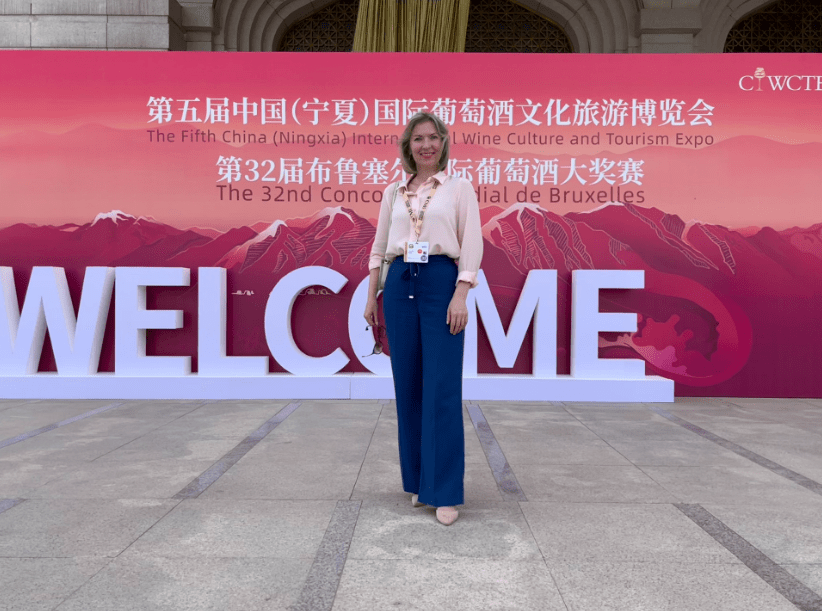
Terroir at the Foothills of Helan Mountain
Selecting Ningxia as the host region was no coincidence. Nestled between the majestic Helan Mountains and the historic Yellow River, Ningxia has swiftly emerged over the past decade as China’s leading wine region, often referred to as the “Bordeaux of China.” Its unique terroir boasts rocky, mineral-rich soils, abundant sunlight, and significant day-to-night temperature fluctuations, resulting in wines of remarkable depth, elegance, and complexity. The region has actively invested in advanced irrigation techniques utilizing water from the Yellow River – essential given its semi-desert climate.
Ningxia’s wine industry has developed at an impressive and rapid pace. By 2022, the region boasted over 38,000 hectares of vineyards, producing approximately 138 million bottles annually. On the slopes of the Helan Mountains alone, 72 large wineries produce around 75 million bottles each year, collectively valued at nearly 4 billion euros. More than 200 active wineries dot the landscape, with 60 having already earned prestigious international awards.
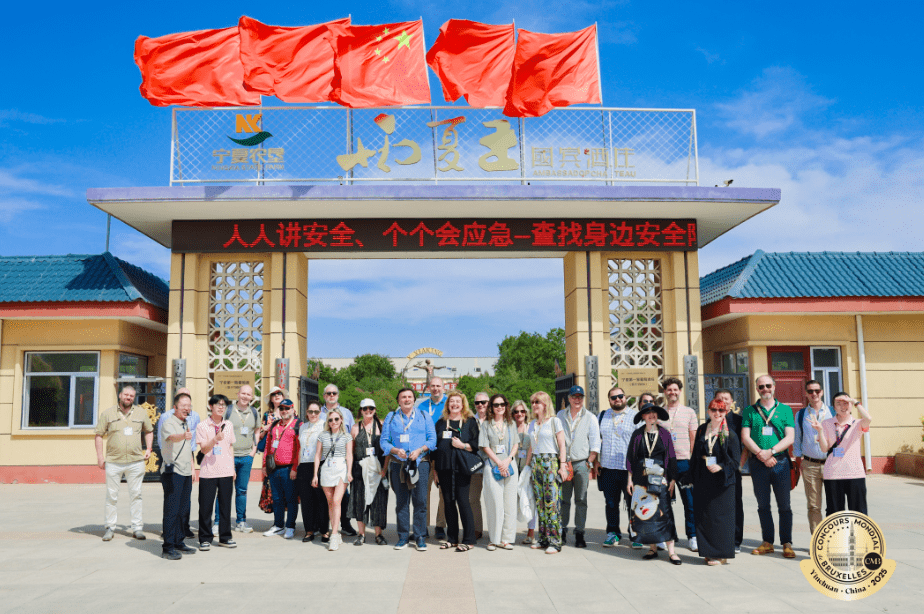
Sampling Ningxia’s reds – Cabernet Sauvignon, Merlot, Cabernet Gernischt, Syrah, and Marselan – I found wines defined by vibrant aromas, silky tannins, balanced acidity, and a remarkable depth of character. Whites such as Chardonnay and Italian Riesling were a delightful surprise, marked by their mineral freshness.
By 2023, around 40,000 hectares had been cultivated, driving annual wine production valued at over 40 billion yuan (approximately $5.63 billion USD). This rapid expansion has been fueled by significant international investments from industry giants such as Changyu, Pernod Ricard, LVMH, and Penfolds, complemented by robust governmental support. Ambitions are even higher, with targets of 100 billion yuan by 2025.
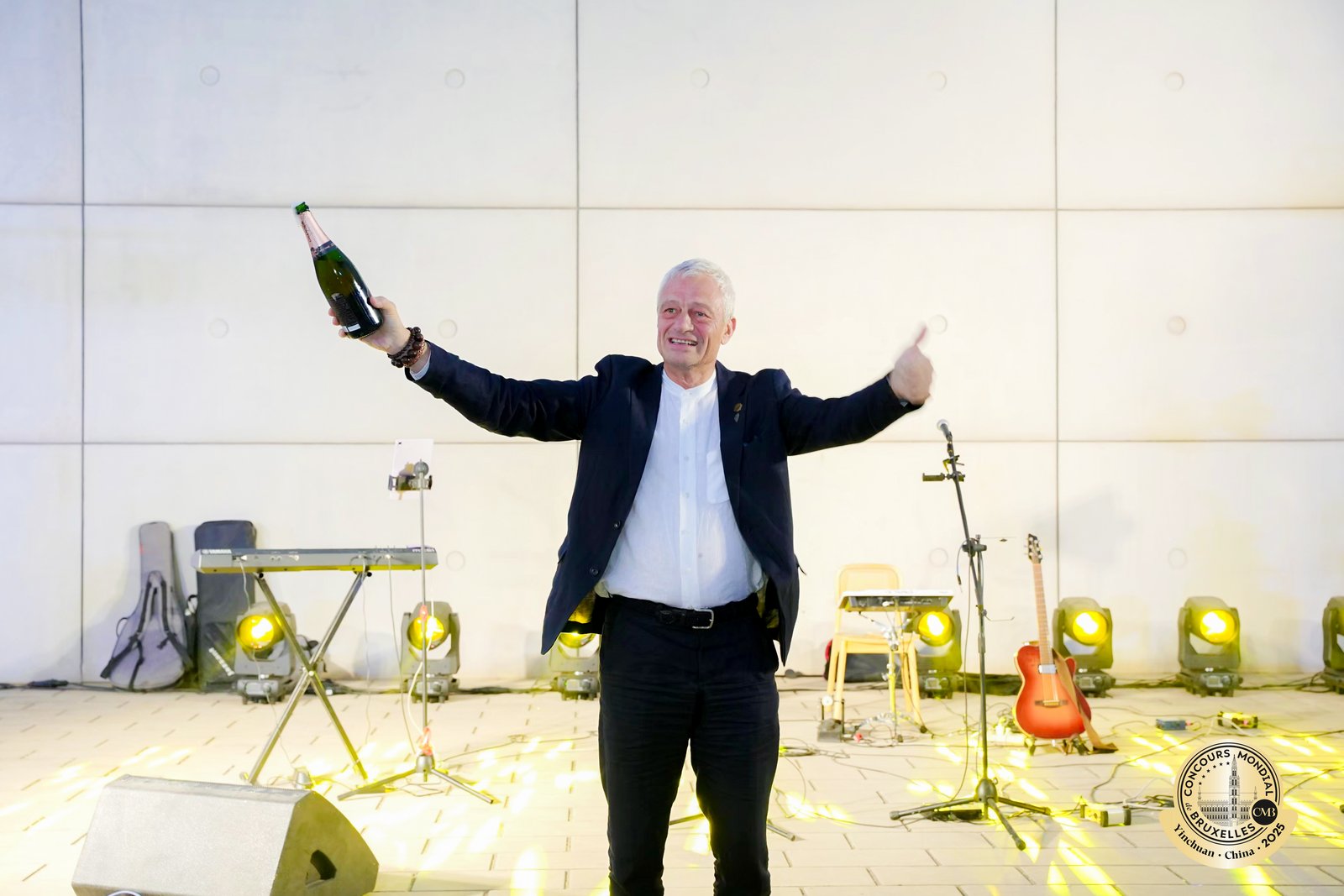
CMB: Touring Asia’s New Wine Capital
Throughout the competition and exhibition, judges attended masterclasses led by distinguished Chinese wine experts. Renowned consultant Professor Li Demei shared insights into China’s terroir development and viticultural evolution, emphasizing unique vineyard management strategies necessary for Ningxia’s extreme conditions. Professor Zhan Jicheng presented pioneering research linking local microorganisms to wine characteristics, illustrating innovative biotechnological advancements. Hao Linhai, the founding chairman of the Ningxia Wine Federation, detailed Ningxia’s rapid ascent into global recognition, emphasizing extensive investment and meticulous planning. Zhang Jing of Helan Qingxue Vineyard offered invaluable insights from two decades of experience, focusing on sustainability, authenticity, and the importance of maintaining boutique-scale production for consistent quality.
Our journey included visits to outstanding Chinese wineries and a deep dive into Ningxia’s wine tourism scene, each element showcasing the region’s exceptional winemaking and wine tourism potential and rich cultural heritage.
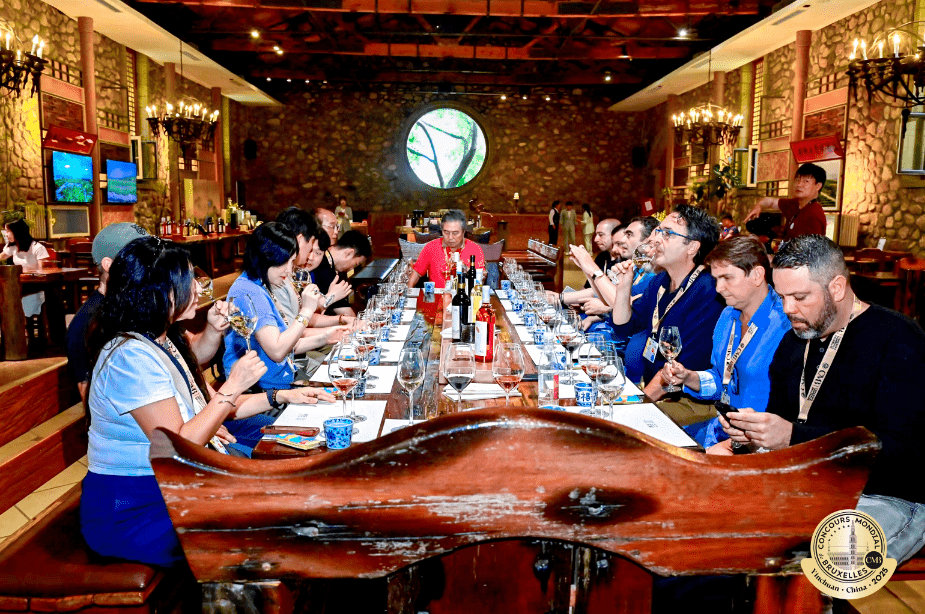
At Yuanshi Vineyard, we discovered a remarkable fusion of traditional Chinese philosophy and modern winemaking, showcasing a profound respect for nature and heritage. The estate, which rose from the site of an old quarry, has been thoughtfully transformed into a lush, eco-conscious haven. Rather than mimic Western chateaux, its design draws inspiration from ancient Chinese aesthetics, using local stones, wooden elements, and handcrafted details to create an atmosphere of harmony and simplicity. The winery integrates extensive green spaces, forests, and gardens, emphasizing environmental stewardship and a deep connection to the surrounding landscape.
Led by third-generation owner Yuan Yuan, Yuanshi embodies a new wave of Chinese wine ambition – focusing on authenticity, sustainability, and quality. The winery limits yields to maintain exceptional standards and crafts refined wines that express the region’s character, including Cabernet Sauvignon, Marselan, and Petit Manseng. One standout series, the acclaimed “Mountain Soul” range won gold at the Concours Mondial de Bruxelles in 2017 and remains highly sought after.
Arriving with a Chinese colleague, I was fascinated to hear that President Xi Jinping had personally visited Yuanshi Vineyard in 2020, a visit that underscored national interest in supporting domestic wine and eco-tourism. Visitors can explore the grounds, experience seasonal activities, and enjoy the serene connection between wine, nature, and traditional Chinese values.
Tasting the wines left a lasting impression, though it’s worth mentioning that the most impressive bottles start at around €110, reflecting their premium positioning and meticulous craftsmanship.
Silver Heights Vineyard also left a strong impression, standing out as one of the pioneers of biodynamic winemaking in Ningxia, certified by Demeter International. Established by Gao Yuan, a visionary winemaker with training in France, Silver Heights represents a harmonious blend of European precision and local character. Instead of grand architectural statements, the winery focuses on substance: a humble exterior hides an unwavering dedication to quality and detail inside. The estate’s vineyards lie at high altitudes on the Helan Mountain foothills, where diverse varietals like Cabernet Sauvignon, Merlot, Chardonnay, Pinot Noir, and Marselan thrive.
Gao Yuan’s commitment to minimal intervention and sustainability is evident in every bottle. From carefully managing yields to fostering biodiversity, the winery emphasizes healthy soils and balanced ecosystems. Since 2017, the estate has embraced biodynamic farming practices fully and introduced new lines, including single-variety expressions and a traditional method sparkling wine made with local Riesling and rice. Gao Yuan’s passion and hands-on approach have shaped a portfolio that resonates deeply with wine enthusiasts looking for authenticity and finesse.
The story of Silver Heights is also a family tale. Gao Yuan’s studies and professional journey in France, her collaboration with her husband Thierry, and the support of her father Gao Lin have built a narrative of dedication across generations. Today, wines like the entry-level Last Warrior, the flagship The Summit, and the premium Emma’s Reserve showcase the estate’s refined artistry and have captured the attention of both domestic and international markets. The visit offers guests a chance to connect with this rich story, set against the dramatic mountain landscape, and taste wines that capture the spirit of Ningxia’s emerging excellence.
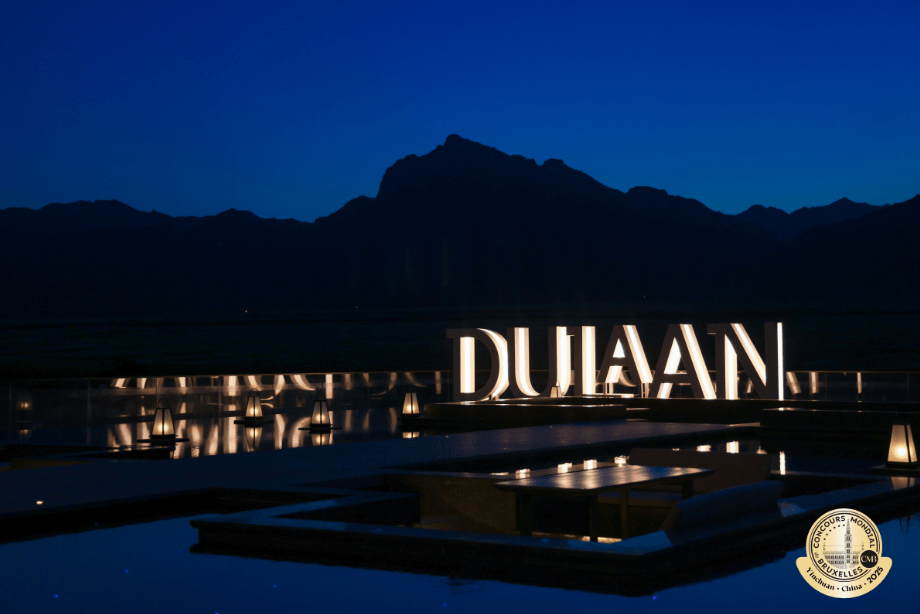
Our wine tourism experience was further enriched by a visit to the unique Chateau Dulaan Holiday Wine Stroll, nestled in a picturesque area at the foot of Helan Mountain, offering outstanding views. This new wine-themed center in Yinchuan combines luxury hospitality, vineyard tours, wine tastings, cultural exhibitions, and educational programs, reflecting Ningxia’s ambitions to establish itself as a leading destination for high-end wine tourism and international recognition.
Helan Qingxue Vineyard stands as an outstanding example of precise craftsmanship and an unwavering commitment to quality. Modest in size but rich in character, this boutique estate has played a pioneering role in putting Ningxia on the global wine map. Founded in 2005, it quickly gained international recognition when its Jiabeilan 2009 Dry Red Wine won a gold medal at the 2011 Decanter World Wine Awards in London – a milestone achievement that surprised many and sparked global curiosity about Chinese wines.
The vineyard’s philosophy centers on purity and precision, reflected in its careful vineyard management and strict yield controls. Its small-scale production, around 60,000 bottles a year, allows for exceptional attention to detail. Helan Qingxue crafts refined wines from Cabernet Sauvignon, Merlot, Marselan, Pinot Noir, and Chardonnay, emphasizing elegance and balance. Producing late-harvest Petit Manseng and distinctive traditional-method sparkling wines, the estate consistently upholds the region’s exacting standards. Its minimalist design conceals a bold vision, symbolized by a poetic marble inscription that reads, “The wine world discovers Ningxia in China from here,” embodying its mission to represent the region authentically.
Beyond its wines, Helan Qingxue offers visitors a serene and almost spiritual connection to the landscape. The vineyard stretches towards the Helan Mountains, evoking a sense of quiet reverence, with white-dominated architecture contrasting beautifully against the lush green vines. This harmony with nature and deep commitment to quality have made it not just a winery but a cultural landmark – an essential stop for anyone seeking to understand the soul of Ningxia through its wines.
Helanhong Winery exemplifies a state-supported vision of winemaking and reflects China’s dedication to combining scale with quality. With an annual production exceeding one million bottles, Helanhong integrates advanced technology, a massive fermentation facility, and strong design rooted in traditional Chinese aesthetics. The winery operates within a large agricultural park, collaborating with several local producers under the Helan Hong brand to strengthen regional identity and shared success.
Its striking “Minning Pavilion,” inspired by classical Chinese architecture, serves as a multifunctional space for education, events, and cultural exchange, reinforcing the connection between wine, community, and Chinese heritage. The estate’s focus on accessibility aligns with the philosophy that wine should be part of everyday life, delivering both quality and value. Popular in both first-tier and emerging domestic markets, Helanhong wines have also gained recognition abroad, and their appearance in popular television series has helped anchor Ningxia’s wines firmly in the national consciousness. This combination of innovation, social responsibility, and wide appeal makes Helanhong a model for modern Chinese wine tourism and production.
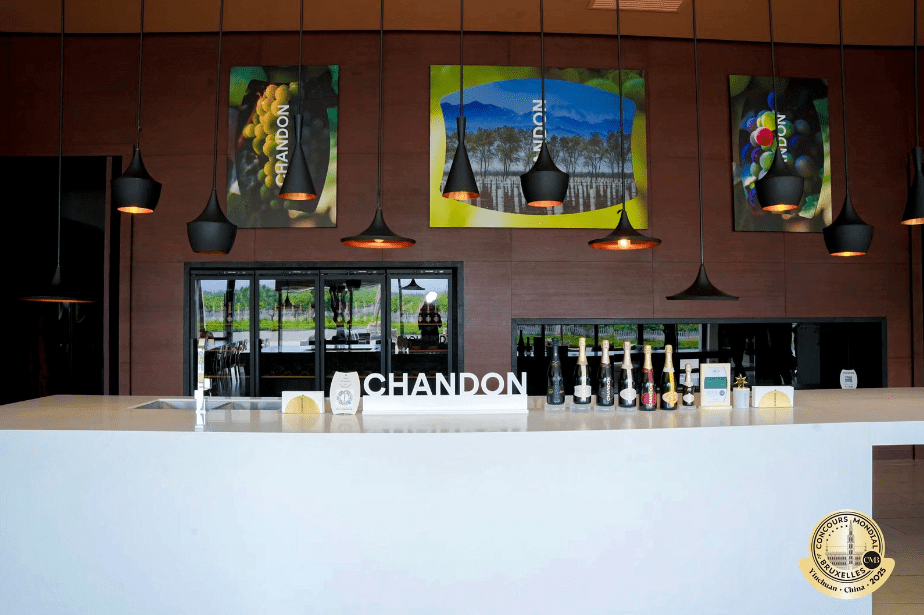
Visiting Domaine Chandon Ningxia offered insight into how international sparkling wine standards are seamlessly integrated with local conditions. As part of France’s Moët Hennessy (LVMH) group, Chandon brings its renowned heritage to Ningxia, combining French winemaking techniques with the unique local terroir. The winery exclusively cultivates Chardonnay and Pinot Noir, producing wines with delicate aromatics and layered minerality. Employing traditional methods, including secondary bottle fermentation and 18 months of aging on lees, the result is elegant, finely textured bubbles. The minimalist architecture reflects both Chinese design and respect for the Helan Mountains. With precise vineyard alignment ensured through satellite technology and wines carefully adapted to local tastes – softer and more perfumed than classic Champagne – Domaine Chandon Ningxia beautifully bridges global expertise and regional character, opening a new chapter for Chinese sparkling wine.
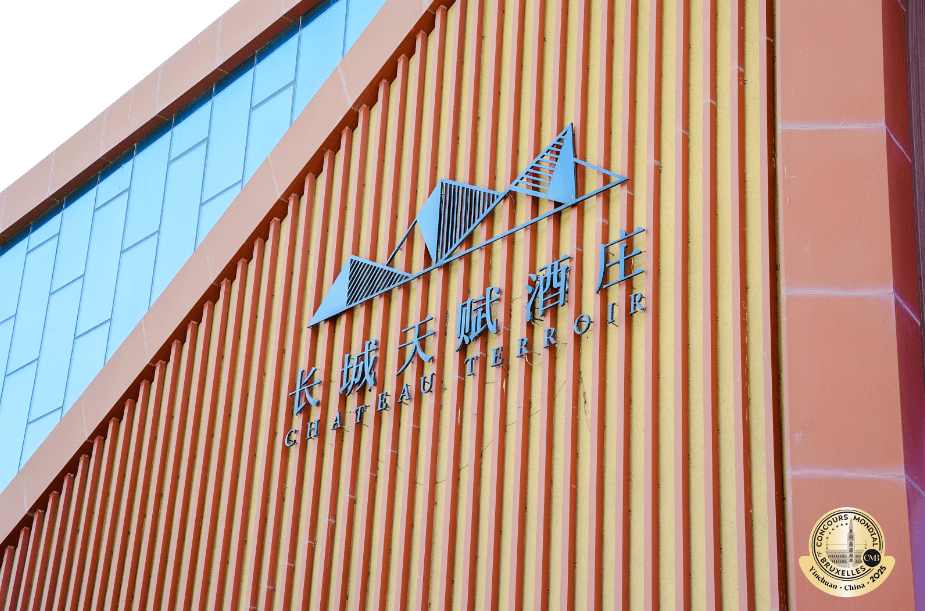
We also visited the renowned Chateau Greatwall Terroir and Xixia King Winery, each adding a distinctive voice to Ningxia’s winemaking landscape. Greatwall, one of China’s most recognizable brands, clearly demonstrates how large-scale production can be balanced with high quality. Xixia King Winery highlights the region’s dedication to terroir-driven wines with strong varietal expression.
In the city streets, bright billboards and digital displays enthusiastically promoted locally produced premium wines, underlining the region’s confidence in its products and its desire to foster a strong internal wine culture.
Recent Chinese investments in wine culture represent not only economic ambitions but also a revival of ancient winemaking traditions dating back to the Han Dynasty. China’s entry into the International Organisation of Vine and Wine (OIV) on November 14, 2024, underscores its significance as the world’s third-largest vineyard area, the eighth-largest wine consumer, and the world’s largest table-grape producer.
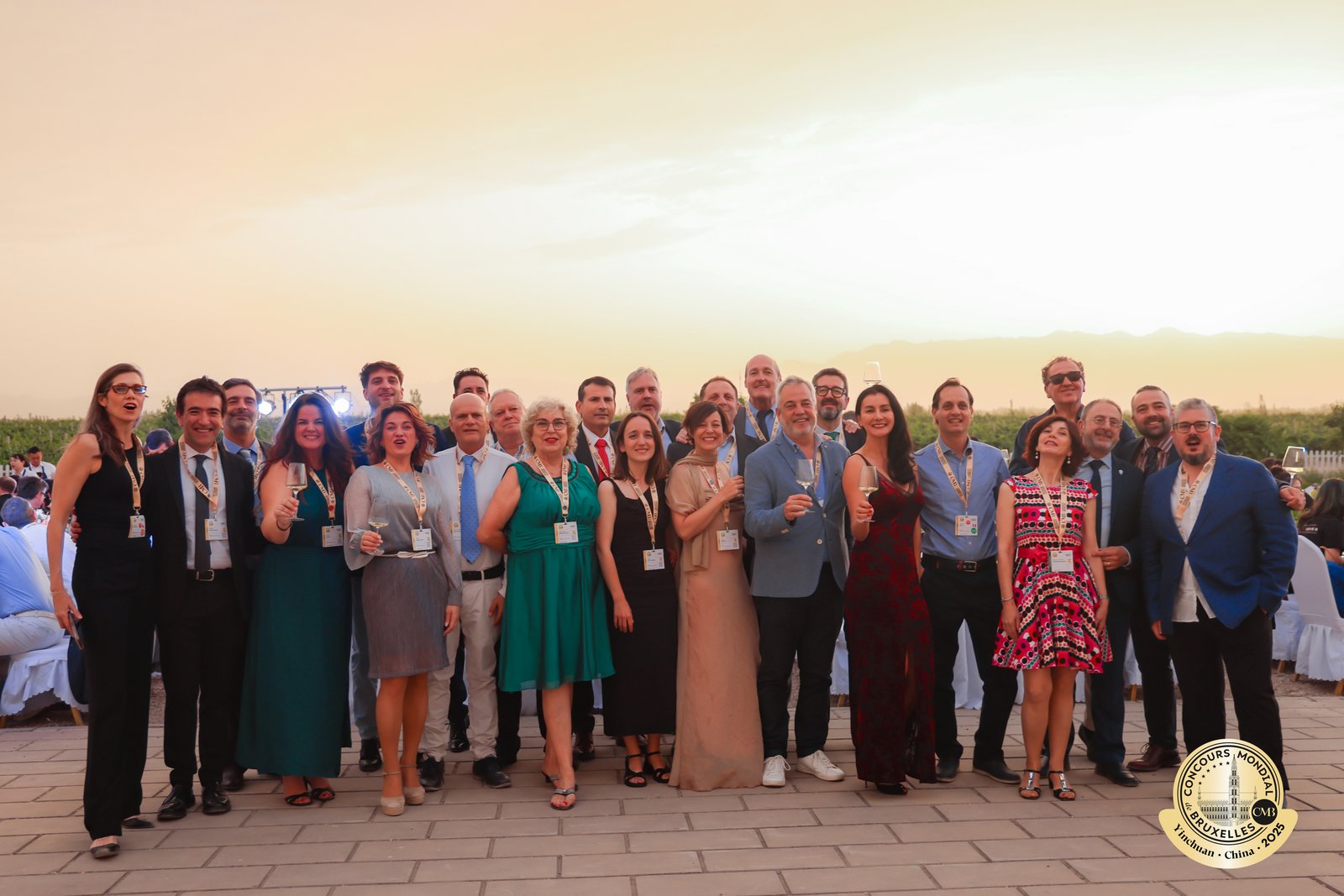
A Gastronomic Portrait of Ningxia
A special dimension to Ningxia’s wine tourism is added by its local cuisine, deeply intertwined with cultural traditions. The Chinese hosts made sure we experienced it to the fullest. The famous local lamb, prepared using traditional recipes and served as it has been for centuries – known as “hand-grabbed lamb” – impressed with its juiciness and depth of flavor. Equally striking was the fragrant, richly flavored handmade lamian noodles, crafted with refined artisanal techniques. Hearty offal-based soups, generously seasoned with garlic, goji berries (noticeably used everywhere from dishes to beverages), and chili peppers, also stood out It fascinated me how naturally chili peppers, introduced to China around 500 years ago – likely by Portuguese and Spanish sailors – have become an integral part of Chinese cuisine. Although not native to China, chili peppers have firmly embedded themselves into the country’s culinary identity, transforming traditional dishes and enriching their flavor palette. All these flavors pair beautifully with local wines, creating a culinary symbiosis that offers a deeper understanding of Ningxia’s regional character and China’s broader cultural heritage. This gastronomic element makes wine tourism in the region not only engaging but also a culturally rich experience, allowing visitors to explore Ningxia’s unique spirit through its cuisine.
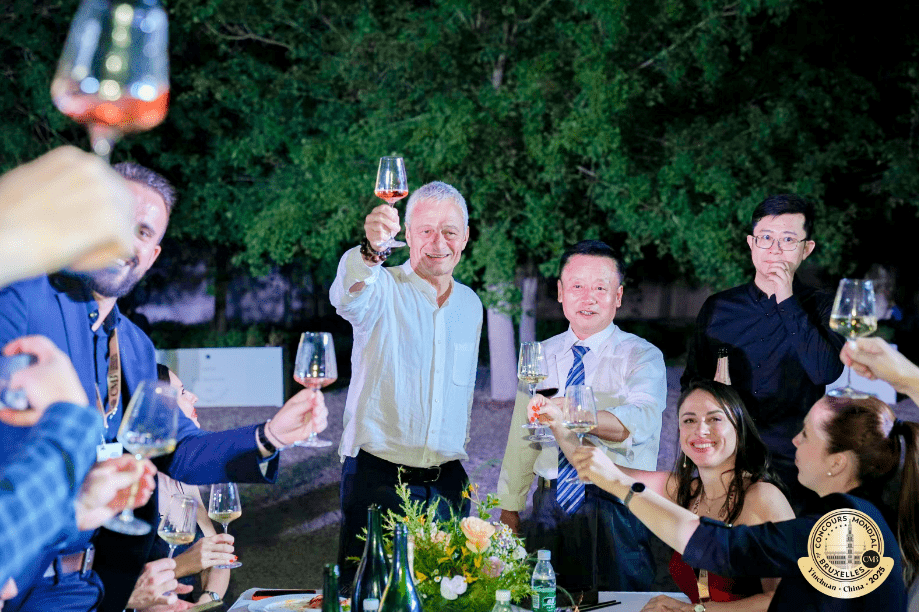
A Broader Perspective
The Concours Mondial de Bruxelles in Ningxia profoundly impacted on the global wine and wine tourism scene, spotlighting a rapidly emerging region poised for immense influence in the coming years. In challenging times for the global wine industry, CMB once again demonstrated its innovative spirit, flexibility, and openness to new perspectives beyond the traditional Eurocentric view.
For me personally, this journey was one of revelation – a profound professional and personal enrichment, showcasing wine’s universal power to transcend boundaries.
The next edition will continue this global voyage in Yerevan, Armenia, from May 21–23, 2026, further expanding the horizons of the world’s wine enthusiasts.
__________
Further Reading: Full results of the Concours Mondial de Bruxelles Red and White Wines Session are now available: https://concoursmondial.com/en/cmb-red-and-white-wines-session-results-revealed/
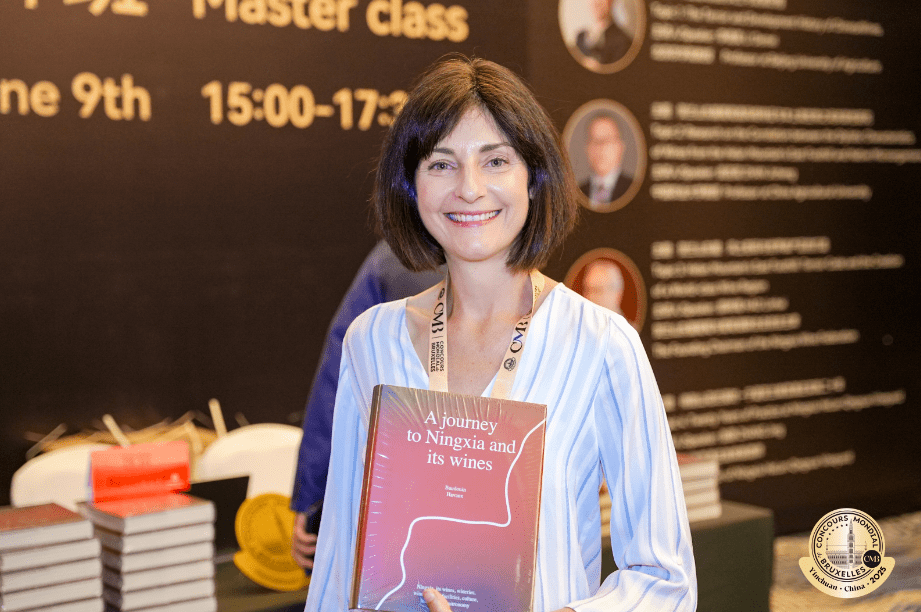
Editor’s Note: Chairman of the Concours Mondial de Bruxelles, Baudouin Havaux, recently published a captivating book, A Journey to Ningxia and its Wines, which was gifted to all judges. This richly illustrated volume distills decades of his personal experience exploring Ningxia’s rise as a wine powerhouse. Havaux vividly portrays the region’s transformation, highlighting its dynamic wineries, the delicate interplay between viticulture and local culture, the warmth of shared meals, and the deep-rooted traditions of hospitality. With travel route suggestions, historical insights, and colorful reflections on wine tourism, this book is a heartfelt tribute to Ningxia’s remarkable story.

Stay connected with Wine Travel Awards:
